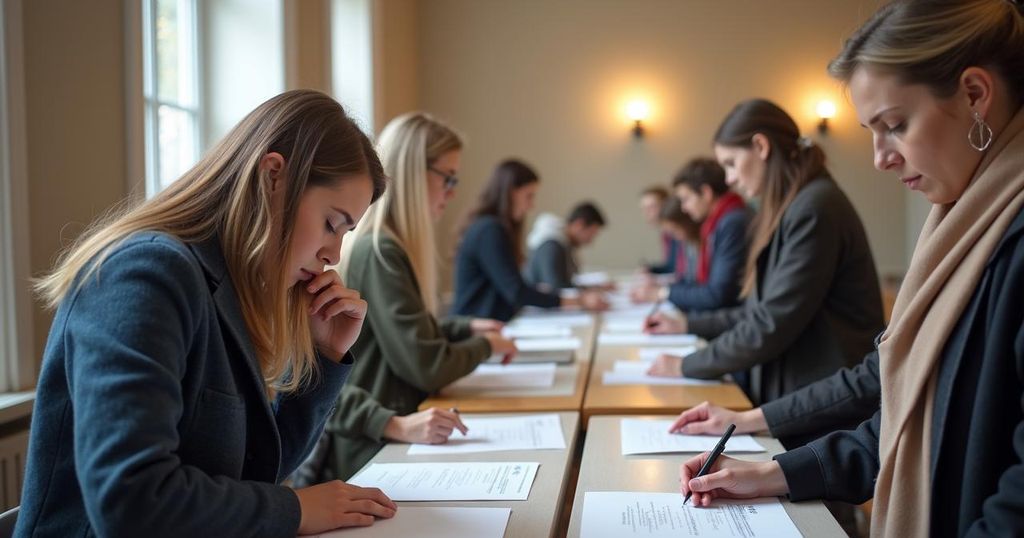Lithuania’s Parliamentary Elections: A Test for the Center-Right Coalition Amid Public Discontent

Lithuanians participated in the first round of parliamentary elections, potentially reshaping government power from the current center-right coalition to leftist opposition parties. Prime Minister Ingrida Šimonytė faces criticism despite positive economic growth, due to her pandemic response and handling of migrant influxes. Recent polls indicate the Social Democrats may lead, but no party is expected to secure a majority, necessitating coalitions for governance.
On Sunday, Lithuania commenced the first round of parliamentary elections, which could result in the opposition Social Democrats and smaller center-left parties supplanting the existing center-right governing coalition. Despite notable economic achievements, including double-digit annual personal income growth and a low inflation rate within the European Union, public sentiment is largely marked by dissatisfaction. Politically, Prime Minister Ingrida Šimonytė’s government, in power since 2020, has been criticized for its stringent COVID-19 measures and insufficient support for businesses during lockdowns, alongside inadequate access to essential healthcare services for numerous citizens. Furthermore, the government’s management of an influx of migrants from Africa and the Middle East, which many attribute to provocations by neighboring Belarus and Russia, has also garnered sharp criticism. Recent polling indicates that the Social Democratic Party, led by Vilija Blinkevičiūtė, has gained significant traction, reportedly polling at double the support for Šimonytė’s Homeland Union, while a newly formed party by right-wing politician Remigijus Žemaitaitis occupies a middle ground in expected outcomes. However, it appears unlikely that any party will secure more than 20 percent of the vote, necessitating coalitions for governance. Given the Social Democrats’ rejection of alliances with Žemaitaitis’ party, it suggests the need for three or four smaller parties to join forces in forming a new governing coalition. The political landscape appears increasingly fractious, with historical supporters of the conservatives reconsidering their votes, as expressed by Darius Mikalauskas, a teacher who expressed disenchantment with the current leading party. While a leftward shift in governance might not indicate major shifts in foreign policy, it occurs against the backdrop of heightened concerns regarding Russian aggression amidst the ongoing war in Ukraine. It is noted that foreign policy in Lithuania is chiefly influenced by the presidency, a position currently held by Gitanas Nauseda, who secured a second term earlier this year. As of now, approximately 2.4 million Lithuanians are eligible to vote for 141 members of parliament, or Seimas, over two rounds, with the second round set for October 27 to finalize single-member constituency candidates.
The article revolves around the parliamentary elections taking place in Lithuania, highlighting the potential shift in power from the current center-right coalition to a coalition led by the opposition Social Democrats. Economic factors, public discontent related to handling of the COVID-19 pandemic, immigration issues, and the political landscape are examined in depth. The context of Lithuania being an EU member with growth indicators also informs the discussion, while the concerns regarding foreign relations—particularly with Russia—add layers to the current voting climate.
In conclusion, Lithuania’s parliamentary election suggests a significant potential for change as many voters express dissatisfaction with the current government, despite economic improvements. The elections will test the public sentiment and lead to the formation of a coalition that could involve several smaller parties, reflecting a shifting political landscape. While the outcome may not drastically alter Lithuania’s foreign policy, it signals underlying frustrations among constituents and the complexities of governance in the context of recent events.
Original Source: www.pbs.org







